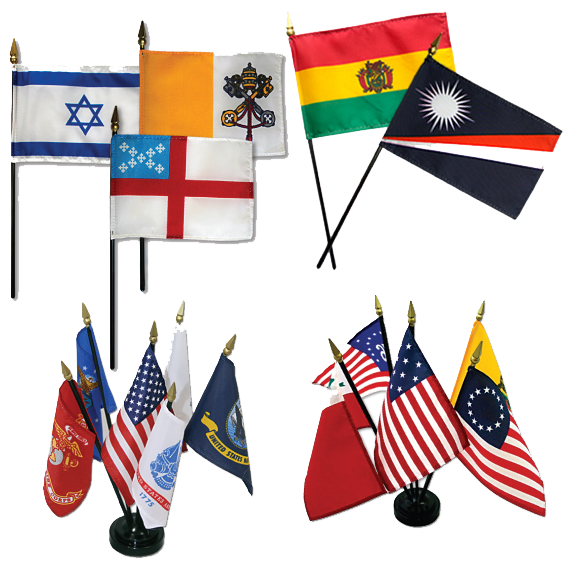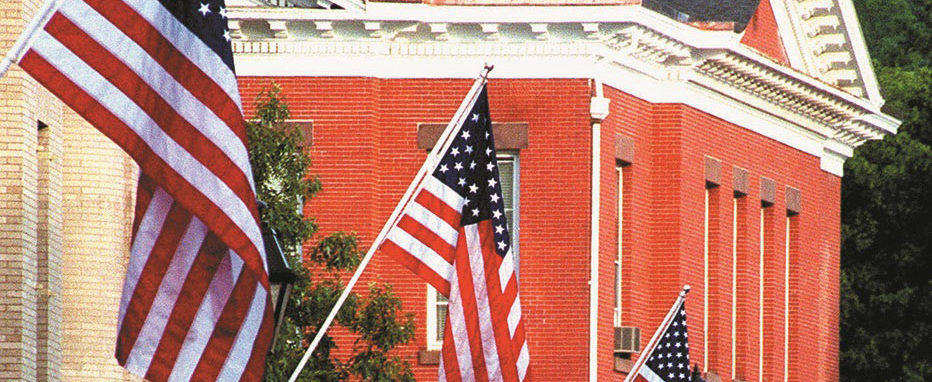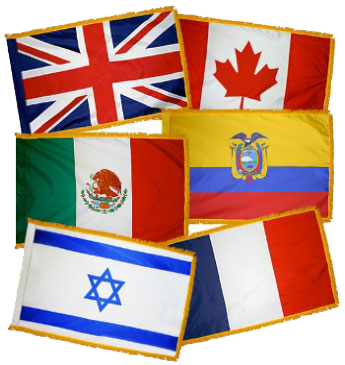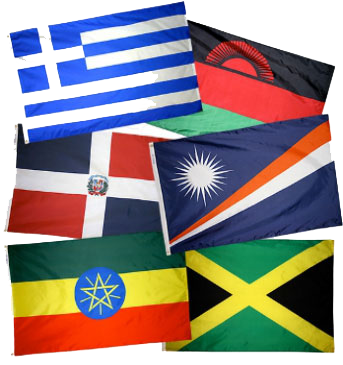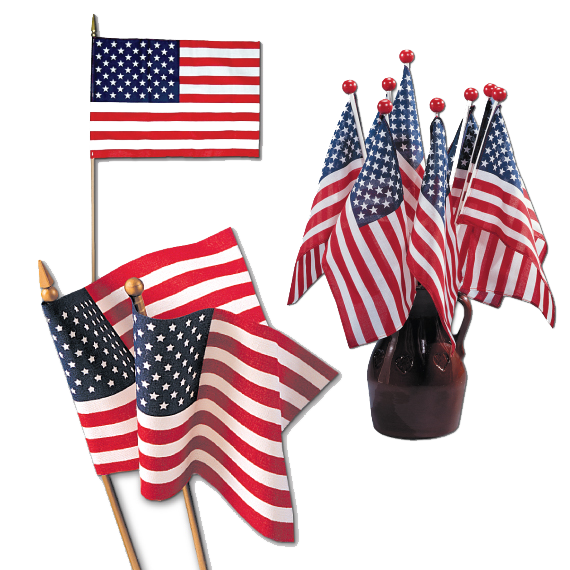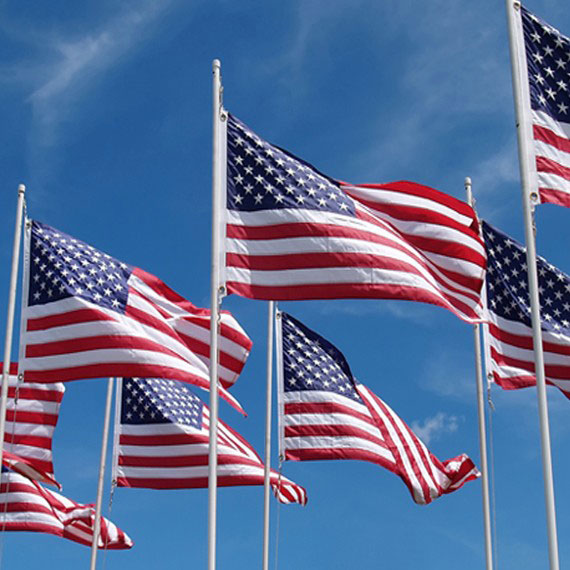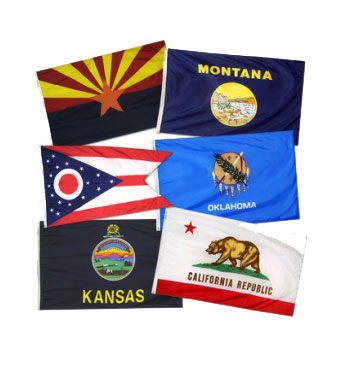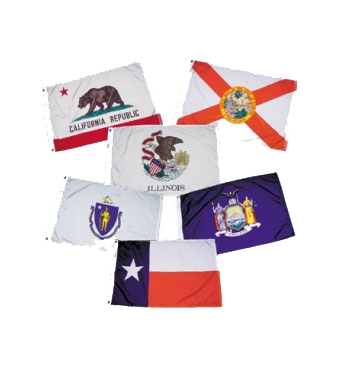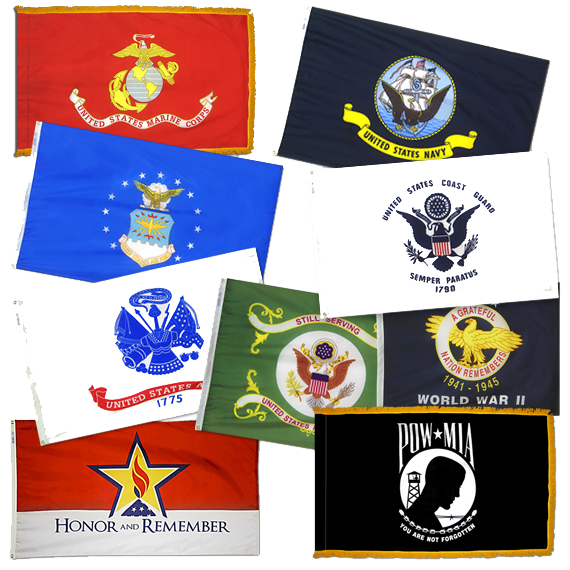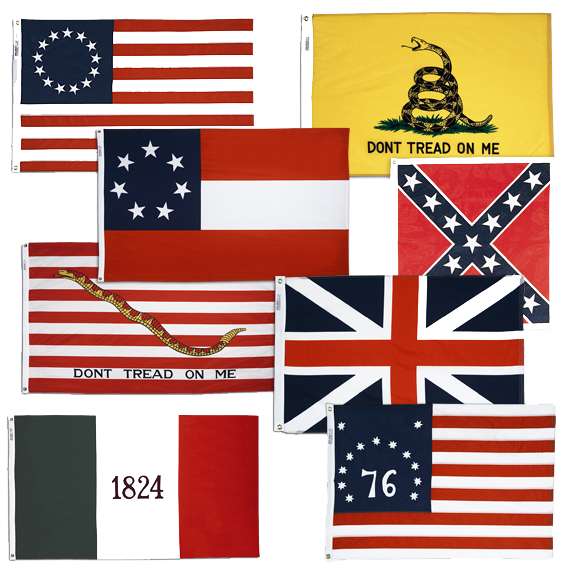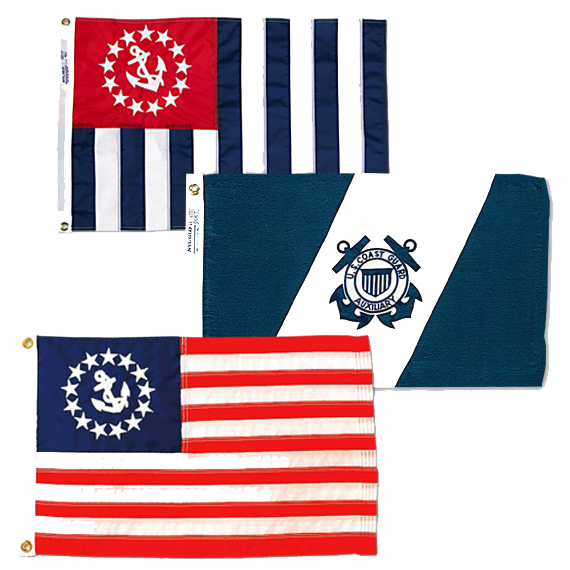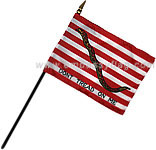Embassy Flag, Inc. employs US military war veterans and sells First Navy Jacks that are made only in the USA.
PRODUCT DESCRIPTIONS
First Navy Jack outdoor flags are USA made of nylon flag material and are finished with a canvas heading and two brass grommets on the hoist side, 2 rows of stitching top and bottom sides and 4 rows of stitching on the fly side. They are attached to the flagpole by means of a halyard (rope) and flag snaps, or to smaller poles with flag fasteners. Standard sizes are 2x3 ft, 3x5 ft and 12x18 inch boat flags. Large size First Navy Jacks are also offered in 4x6 ft, 5x8 ft and 6x10 ft nylon.
First Navy Jack boat flags are nylon, 12”x18” size with 2 brass grommets, made in America.
First Navy Jack desktop flags are made in the United States. Size is 4 x 6 inch, lightweight nylon material, hemmed all four sides, mounted on 10” black staffs with a golden spear point. Table top bases are available in black plastic to display from 1- 7 flags. Wood bases are available with either 10 holes or 12 holes to display additional flags.
FLAG DESCRIPTION / HISTORY
The flag commonly known as the First Navy Jack, "Don't Tread on Me" striped flag may not be historically accurate. More regarding the following can be read at history.navy.mil Naval History and Heritage Command, The U.S. Navy's First Jack.
The image of the rattlesnake and the motto "Don't Tread on Me" had associations with the Continental Navy.
On 27 February 1777, a group of Continental Navy officers proposed that the full dress uniform of Continental Navy captains include a gold epaulet on the right shoulder with "the figure of a Rattle Snake Embroider'd on the Strap...with the motto don't tread on me."
In early 1776 Commodore Esek Hopkins, the first and only commander in chief of the Continental Navy fleet, used a personal standard designed by Christopher Gadsden of South Carolina. This flag consisted of a yellow field with a coiled snake and the motto "Don't Tread on Me" and is usually referred to as "the Gadsden flag."
The only written description of the Continental Navy jack contemporary with the American Revolution appears in Commodore Hopkins's "Signals for the American Fleet," January 1776, where it is described as "the strip'd jack." No document says that the jack had a rattlesnake or motto on it. Elsewhere, Hopkins mentions using a "striped flag" as a signal. Since American merchant ships often displayed a simple red and white striped flag, there is a good chance that the striped jack to which Hopkins refers was the plain, striped flag used by American merchant ships.
The Rattlesnake Jack and the Modern Navy
As part of the commemoration of the bicentennial of the American Revolution, by an instruction dated 1 August 1975 (SECNAV Instruction 10520.3) the Secretary of the Navy directed the use of the rattlesnake jack in place of the union jack (blue field with white stars) during the period 13 October 1975 (the bicentennial of the legislation that created the Continental Navy, which the Navy recognizes as the Navy's birthday), and 31 December 1976.
By an instruction dated 18 August 1980 (SECNAV Instruction 10520.4), the Secretary of the Navy directed that the commissioned ship in active status having the longest total period in active status to display the rattlesnake jack in place of the union jack until decommissioned or transferred to inactive status.
By an instruction dated 31 May 2002 (SECNAV Instruction 10520.6), the Secretary of the Navy directed the use of the rattlesnake jack in place of the union jack for the duration of the Global War on Terrorism. (ref; history.navy.mil, Naval History and Heritage Command, The U.S. Navy's First Jack)
|
